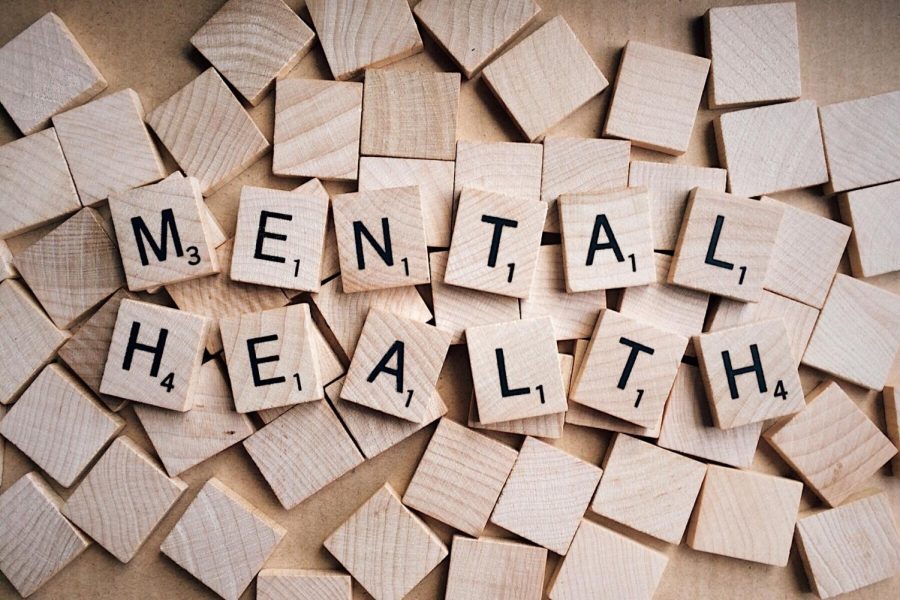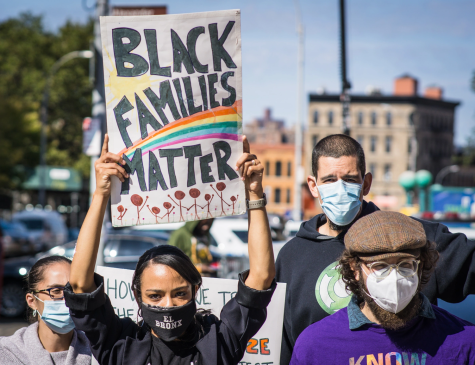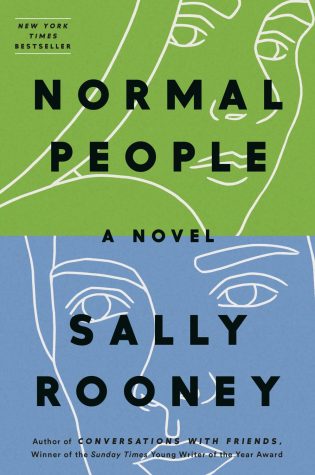We Must Fix How Our Media Covers Mental Illness
June 21, 2021
In November 2020 another family buried their son. Ricardo Muñoz was a 27-year-old man battling schizophrenia for five years. After refusing to take his medication, Muñoz had begun to experience a mental episode
During this episode, Munoz’s mother and sisters called a crisis hotline, the non-emergency police number, and eventually 911 in an attempt to find help. In the 911 call, Munoz’s sister said that Ricardo was being aggressive, attempting to enter the house, and mentally ill. The police believed they had a domestic disturbance and shot and killed Muñoz minutes after they arrived.
America has a serious issue when it comes down to viewing those who struggle with mental illness. For several decades, the media has misrepresented mental illness, resulting in a failure to help those struggling with mental health, a mischaracterization of particular illnesses, and a sense of fear regarding mental illness itself.
As a country, it is the responsibility of the majority to provide help and resources to those in the minority experiencing hardship. People often fail to see how America continues to hurt those struggling with mental health.
Throughout American history, minorities have been belittled and mistreated due to how they were wrongfully represented by the media. One of the earliest examples of this is minstrel shows which were very popular all over America from the mid-1800s until the early 1900s. These shows harmed African Americans’ ability to have equal rights for generations because of how they were negatively represented and continue to create sociopolitical hurdles to achieving equality.
In a similar light, unrealistic and stereotypical portrayals of those struggling with mental health have affected how much of America views mental illness. The perspective many Americans have limits the country’s ability to truly create any meaningful change when it comes down to providing proper treatments to those with mental illnesses.
In order to ensure a true social change in regard to mental illness, people need to recognize their own faults and change them for a brighter and more progressive future.
Mental illness is a growing problem in America. A 2019 survey found that 20.6% of adults in America had experienced mental health problems. Beyond adults, 16.5% of people 6-17 years of age had received some form of mental health treatment the previous year, according to the survey. All of these numbers had grown from past years and it shows just how much of an issue mental health is becoming in the U.S.
While these numbers are growing, and Americans are becoming both more educated and aware of mental health, the media is still largely stuck in the past in regard to its coverage of mental health problems.
The media has created myths regarding mental illness that much of America still believes. These can consist of believing that sufferers are violent, unpredictable, or that they don’t improve with treatment. While these myths are potentially damaging to all of society, they have a profound impact on victims of mental illness
Heather Stuart, a researcher in community health at Queen’s University in Kingston, Ontario, found that media misrepresentation had a substantially negative effect on mental health sufferer’s self-esteem, willingness to ask for help, and sticking to their recovery plans due to the stigma created by the media.
In terms of media, framing refers to how the media portrays events and people by adding details and using specific pieces of information to display a narrative on what is good and bad. The way that our media is framed ultimately sets up how an audience should feel about an issue. This process is known as priming. Changing the way the media frames mental illness is essential in helping those who suffer from them.
By looking into the ways our media has set the agenda and continues to prime and frame issues of mental health, we can see where we need to go in terms of media coverage to ensure true social change.
One important area of media framing of mental health relates to drug use. Drug addiction is often wrongly characterized as a crime rather than a mental illness. For a very long time, the media has focused on drugs when discussing crimes and scandals.
While the exact time the media began doing this is largely unknown, it is a known fact that they continue to use drug use as a framing tool in their stories. The framing of drug use in news coverage regarding problematic behavior wrongly makes drug addiction appear to be an elective choice and makes audiences feel unwilling to help drug users.
It is largely recognized by the medical community that drug addiction is a mental illness, dating back to 1994 when the American Psychiatric Association first classified “substance use disorder” as a mental illness. The Mayo Clinic called substance use disorder a disease that leads to changes in the brain and the person’s behavior that makes them unable to control their use of drugs.
Unfortunately, the media fails to equally classify drug use as a mental illness, but rather uses it as a tool when discussing alarming and/or illegal behavior.
A recent article by the Los Angeles Times discussed two men who were involved in incidents with the police while presumably under the influence of drugs. The article talked about the men as if they were coherent with details added into the framing such as one of the men wearing a bulletproof vest and the other “ignores” the police’s commands, with the officers attempting to “coax [him] out” only to get shot and killed after reaching for his knife again.
While the article doesn’t make it clear if addiction was involved, the connection between crime, violence, and drug use is ultimately harmful to America’s view on drug users. This framing is at times inaccurate and is harmful because it makes people believe that drug users are fully aware of their actions when most of the time, they are mentally absent. By reframing how we view drug addicts, the media can contribute to the public’s willingness to help drug addicts.
The Surgeon General’s Report on Alcohol, Drugs, and Health found that many drug addicts suffered from abuse, poverty, and mental illness, among others when growing up. By reframing how the media talks about drug use by including mental illness and background information as factors, they can ultimately create change by allowing the public to view their individual circumstances and how they got into drugs in the first place, rather than the drug use being a portion or cause of the wrongful behavior on its own.
Much like drug addiction, the media has used anxiety as a tool when talking about criminals. According to Mayo Clinic, anxiety disorders are when people suffer a great amount of distress in everyday situations which causes them to be excessively worried and avoid certain places and/or situations.
The National Alliance on Mental Illness (NAMI) stated that it is also one of the most common disorders with 19.1% of the U.S. population suffering from anxiety disorders. It is also manageable with proper treatment.
A common way in which news media describe suspects of crimes is to display how that had withdrawn behaviors and other “warning signs” people failed to see. This is particularly evident now with the substantial increase of shootings within the past few years.
A recent article by The Daily Beast discussed the suspect of the recent Colorado supermarket shooting. The article coined the shooter as “anti-social” and dove into how people believed he was mentally ill before talking more about his alarming activities. His sister called him “quiet” and said he seemed “nice.”
This particular type of framing makes the public believe that anxious people are a threat to society. In reality, most people who suffer from anxiety are not dangerous criminals. Changing the narrative from suspects being withdrawn to something else would decrease the fear people experience when seeing antisocial behaviors, ultimately helping those who suffer from anxiety.
In terms of the media coverage, there is one distinct grouping of disorders that has seen improvement in recent history but still shows that there is still a lot more to be improved upon. Eating disorders are defined by the National Institute of Mental Health (NIMH) as a severe disturbance in eating behaviors that can also include an obsession with food, weight, and body shape. Their statistics show that both men and women suffer from eating disorders, with the adult and adolescent ranges having similar percentages within their classifications.
The media coverage of eating disorders fails to highlight all of these diverse demographics and is seemingly obsessed with the traditional image of thin, young white women. One of the very first instances of eating disorders being publicized by our media in history is the death of Karen Carpenter.
The initial media coverage of Carpenter’s struggle with anorexia nervosa and death is one of the first instances where eating disorders were put into public consciousness.
In 2020, for Carpenter’s 70th birthday, People Magazine reposted their coverage of Carpenter’s death in 1983. By reposting the story in its unedited format from 1983, People showed us how harmful media coverage could be when discussing mental illness.
In the story, they talked about Carpenter’s life and death while spending a long time discussing anorexia. They called it “the good girl’s disease,” emphasizing how Carpenter looked happy which they said was a sign of anorexia, her obsession with weight, and use of laxatives. The story ultimately set the agenda for how we talk about eating disorders today in this stereotypical way.
Unfortunately, this way of reporting eating disorders continues in our media coverage with stories emphasizing thin, young white women. An example of where we can go in the future is the New York Times article “Trapped in the House with an Eating Disorder,” which highlights many demographics and sufferers of eating disorders in the right way, bringing proper awareness to the real way these diseases work.
When it comes down to how our media covers mental illness, we still have a long way to go. The wrongful ways in which mental illness is covered or used as a framing tool causes harm. There is nothing but positive outcomes that can be created by fixing the way we discuss mental illness. Ultimately, through a new framing, the public may be more willing to help those who are struggling with mental illness rather than fear, shun, and shame them in the years to come.
















